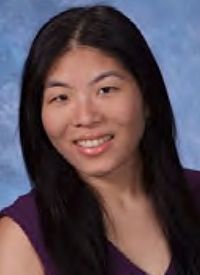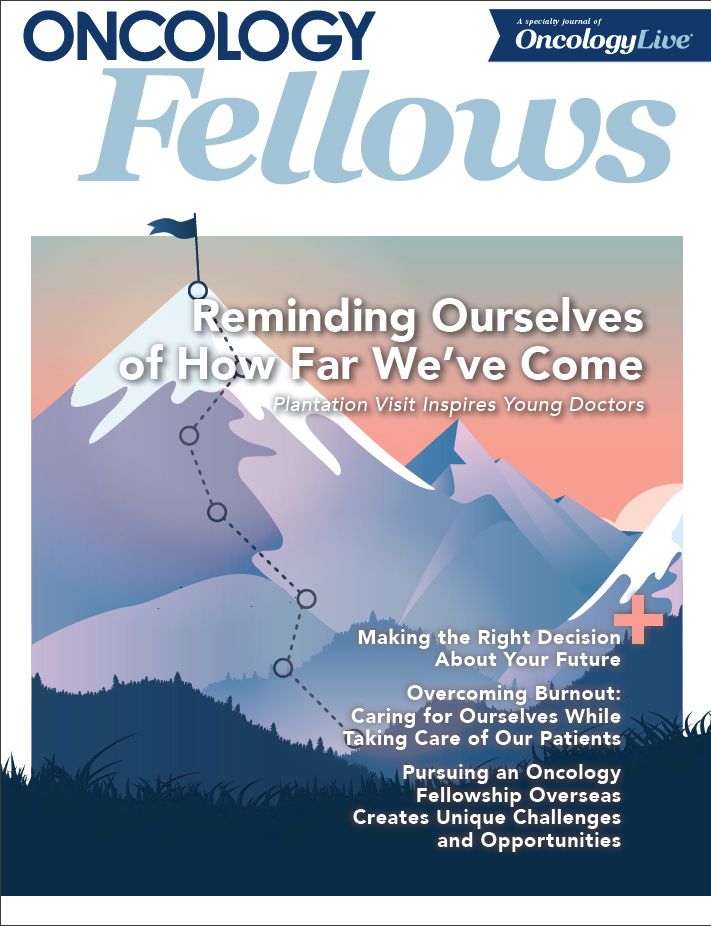Overcoming Burnout as an Oncology Fellow
Janice Shen, MD, provides advice on how to overcome burnout in order to provide the best care possible for patients with cancer.
Janice Shen, MD, Hematology Oncology Fellow Northwell Health Center for Advanced Medicine, Monter Cancer Center

Janice Shen, MD
I remember holding my grandfather’s hand as he took his last breath, a soft sigh that meant the end of all the hardships he endured while battling metastatic colon cancer. I vowed then to become a hematologist/oncologist. Watching a family member suffer through an advanced stage of cancer gave me profound insight into the fears that accompany a terminal diagnosis. I always admired the compassion required of a cancer specialist and yearned for a career in which I could develop meaningful long-term relationships with my patients.
Throughout medical school and residency, I prided myself on my ability to build strong rapport with patients and draw from my personal experience with bad news to empathetically console those in distress. However, as fellowship began, my bountiful pocket of empathy quickly ran low, and I struggled to recharge between the seemingly endless consults and beeping pagers.
The first few months of my fellowship were riddled with long days that ended with choosing between eating dinner, exercising, or sleeping. Surely there would be no time to do all the above and still survive the next day filled with conferences, consults, and chemotherapy orders. Here I was, starting at the bottom again, a position I was all too familiar with during my first years of high school, college, medical school, and residency. This hierarchical structure typically meant that every first year of training entailed more time spent studying and working longer hours, while simultaneously being underacknowledged by the senior staff.
I became callous, especially toward patients who would note that, as an Asian American woman, I looked younger than my age—too young to be making critical medical decisions. I lost patience with those who would angrily ask, “Isn’t it all in the chart?” when I asked them about their medical history.
I became extremely sensitive to microaggressions from my colleagues, who appeared equally drained. It was difficult at times to maintain the same level of passion for medicine I once had, but I soon realized that I was limiting myself from becoming a successful physician. As a new fellow, I was burning out and simply did not know how to cope.
While We Take Care of Others, Who Takes Care of Us?
The effects of my burnout, like an angrily shaken soda bottle, resulted in episodic explosions that splashed on those who deserved it the least—my significant other, my immediate family members, and my friends. I envied those in my nonmedical support system who already had sizeable incomes and growing families, while I struggled to study for national board exams and pay off my student loans. It is difficult for me to think about the friendships that faded away due to the many birthdays, baby showers, anniversaries, and vacations I missed because of nights and weekends spent working.
It took a few more months of settling into fellowship, and new onset heartburn, before I understood that I had to care for myself in order to properly care for others. It became clear to me that I was sluggish and inefficient on the days I went to work sleepdeprived or nauseated with hunger pains. I thought I was maximizing my time. In reality, I was cheating my patients and putting my own health at risk.
This realization pushed me to make my own physical fitness a top priority. I rarely skip meals these days. I make time to go to the gym for a few evenings every week. I took up kickboxing again, a hobby I’d neglected during my residency. As a result, I’m more energized and motivated to work through my 12-hour shifts.
I also made a conscious effort to reach out to senior faculty members and other fellows, all of whom helped me tremendously to remain resilient, rediscover my passion for medicine, and recognize that I had the ability to take care of patients with cancer. One mentor told me that after a long day of seeing patients, it often helps to unwind by reflecting on what motivated us in the first place and pinpoint what makes our work meaningful. Personally, it is the little things that remind me of how lucky I am to be a doctor—whether it is a warm smile from a patient, a handwritten thank-you note, or a hug of gratitude. These small nuggets of appreciation make this job a privilege and help keep me from burning out.
The most useful advice came from a social worker at the cancer institute, who met with the fellows weekly to discuss our emotions in a safe space, gave us tips on how to achieve restful sleep through meditation, and advised us on other helpful breathing techniques. She emphasized the importance of fueling our brains with good nutrition, which is essential for optimal functioning. During one group activity, each fellow was asked to share his or her own way of reducing stress. For some, relieving burnout took the form of listening to music or going for a jog to raise endorphins; for others, lengthy venting sessions with coworkers or even trained medical professionals were therapeutic.
Beating Burnout
In May 2019, the World Health Organization officially recognized burnout as an occupational phenomenon.1 Furthermore, the disturbing rates of physician suicide indicate an absolute need for every healthcare institution to address physician wellness.
Findings from a recent meta-analysis showed that 28.8% of physicians in training reported experiencing depression or depressive symptoms.2 Not only do these symptoms affect a physician’s long-term mental health, but they also have significant consequences for patient care. Therefore, it is essential to give providers the right tools to recognize burnout in both themselves and their colleagues.
Female physicians are at particular risk for burnout. Studies have shown that within 6 years of completing training, 22.6% of female physicians no longer work full time, compared with just 3.6% of their male counterparts.3 Approximately 40% of female physicians complete approximately 25 years of schooling and medical training, only to take a part-time position or stop practicing medicine completely in the prime of their careers, due to unresolvable home and work conflicts. This is in part because women continue to take on the majority of the burden of household tasks, compared with men, in male-female partnerships.
There is an added challenge when there are 2 working parents who must negotiate how to split their responsibilities regarding childcare. Even then, the number of hours mothers, including physicians, spend on childrearing continues to surpass that of fathers. It is unfortunate, but understandable, that family responsibilities, chronic problems of unequal pay, and barriers to professional advancement leave some women to feel as if they have no choice but to exit the medical profession early.
The gender disparity highlights a potential modifiable risk factor for burnout. Providing on-location daycare facilities, supporting parental leave, or hiring more staff can decrease overall physical and emotional fatigue, allowing women to continue building a successful medical career while simultaneously tending to family obligations. Ultimately, there is still a significant amount of work to be done in championing wellness in the medical profession for all physicians.
Here are 5 tips I can offer from my experience to prevent and combat burnout:
- The first year of fellowship in hematology and oncology requires a deep exploration and an open mind. Attend the American Society of Hematology and American Society of Clinical Oncology conferences to network with other faculty members and fellows. Building connections early on can help reduce the stress of last-minute networking when applying for jobs as a third-year fellow.
- Getting to know your interdisciplinary team while on the wards minimizes burnout by promoting teamwork, enhancing communication, and reducing misunderstandings. Encouraging all members to work at the top of their licenses can help improve workplace relationships and decrease passive-aggressive behavior, resulting in better patient care.
- Don’t be afraid to ask for help. Whether that means seeking mentorship, finding support groups, or obtaining assistance on a complex medical case, your supervising attendings and ancillary staff can help ease anxiety and provide the appropriate resources to guide you through your first year.
- For physicians with children, spending quality time with your patients and family remains a difficult balance to maintain. Hiring household help, recruiting family members to babysit during call days, and speaking with your superiors about flexible scheduling are all considerations that may alleviate the overall burden of being a parent and physician.
- Finally, be kind to yourself and to others. Surround yourself with those who empower you and support your growth as a person and physician.
References
- World Health Organization. Burn-out an “occupational phenomenon”: International Classification of Diseases. who.int/mental_health/evidence/burn-out/en/. Published May 2019. Accessed January 5, 2020.
- Mata DA, Ramos MA, Bansal N, et al. Prevalence of depression and depressive symptoms among resident physicians: a systematic review and meta-analysis. JAMA. 2015;314(22):2373-2383. doi: 10.1001/jama.2015.15845.
- Paturel, A. Why women leave medicine. AAMC. www.aamc.org/news-insights/ why-women-leave-medicine. Published October 2019. Accessed January 5, 2020.




